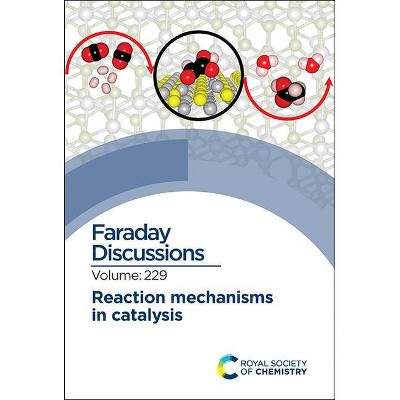How to Solve Organic Reaction Mechanisms - by Mark G Moloney (Paperback)

Similar Products
Products of same category from the store
AllProduct info
<p/><br></br><p><b> About the Book </b></p></br></br>Originally published as: Reaction mechanisms at a glance (Malden, Mass.: Blackwell Science, 2000).<p/><br></br><p><b> Book Synopsis </b></p></br></br><p><i>How To Solve Organic Reaction Mechanisms: A Stepwise Approach</i> is an upgraded and much-expanded sequel to the bestselling text Reaction Mechanisms at a Glance. This book takes a unique approach to show that a general problem-solving strategy is applicable to many of the common reactions of organic chemistry, demonstrating that logical and stepwise reasoning, in combination with a good understanding of the fundamentals, is a powerful tool to apply to the solution of problems.<br /><br />Sub-divided by functional group, the book uses a check-list approach to problem-solving using mechanistic organic chemistry as its basis. Each mechanistic problem is presented as a two-page spread; the left-hand page introduces the problem and provides a stepwise procedure for working through the reaction mechanisms, with helpful hints about the underlying chemistry. The right-hand page contains the full worked solution and summary.</p> <p>This revised edition includes the following updates: </p> <ul> <li>A new chapter which applies the problem solving strategy to ligand coupling reactions using transition metals</li> <li>Much-expanded set of fully worked problems</li> <li>Over 40 further problems (with answers for tutors) for use in tutorials</li> </ul> <p><i>How To Solve Organic Reaction Mechanisms: A Stepwise Approach</i> is an essential workbook for all students studying organic chemistry, and a useful aide for teachers of undergraduate organic chemistry to use in their tutorials.</p><p/><br></br><p><b> From the Back Cover </b></p></br></br><p><i>How to Solve Organic Reaction Mechanisms: A Stepwise Approach</i> is an upgraded and much-expanded sequel to the bestselling Reaction Mechanisms at a Glance. This book takes a unique approach to show that a general problem-solving strategy is applicable to many of the common reactions of organic chemistry, demonstrating that logical and step-wise reasoning, in combination with a good understanding of the fundamentals, is a powerful tool to apply to the solution of problems.</p> <p>Subdivided by functional group, the book uses a checklist approach to problem-solving using mechanistic organic chemistry as its basis. Each mechanistic problem is presented as a two-page spread; the left-hand page introduces the problem and provides a stepwise procedure for working through the reaction mechanisms, with helpful hints about the underlying chemistry. The right-hand page contains the full<br />worked solution and summary.</p> <p>This revised edition includes the following updates: </p> <p>- A new chapter which applies the problem-solving strategy to ligand coupling reactions using transition metals</p> <p>- Much-expanded set of fully worked problems</p> <p>- Over 40 further problems (with answers for tutors) for use in tutorials</p> <p><i>How to Solve Organic Reaction Mechanisms: A Stepwise Approach</i> is an essential workbook for all students studying organic chemistry and a useful aide for teachers of undergraduate organic chemistry to use in their tutorials.</p><p/><br></br><p><b> About the Author </b></p></br></br><p><strong>Professor Mark Moloney</strong>, Department of Chemistry, University of Oxford, Chemistry Research Laboratory, Oxford, UK.
Price History
Price Archive shows prices from various stores, lets you see history and find the cheapest. There is no actual sale on the website. For all support, inquiry and suggestion messages communication@pricearchive.us




















